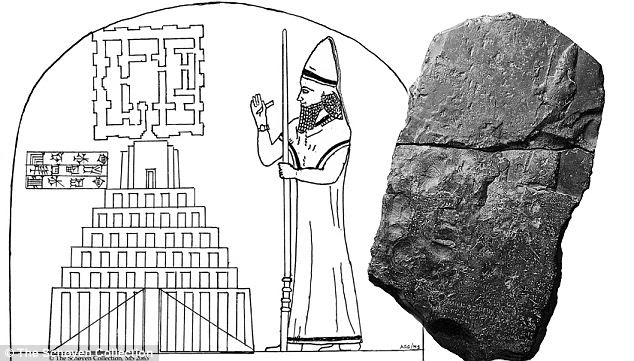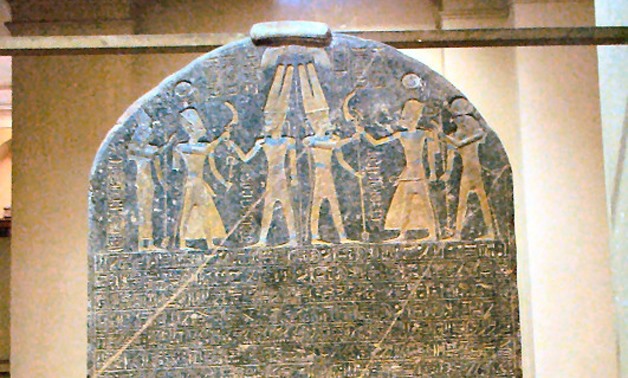 Lost Culture of
Lost Culture of
the Chaldeans
Part One (ii):
Sumerians merge into
Chaldeans
by
Damien F. Mackey
“Why Berossos [Berossus] would draw on sources of the “Sumerians” to
tell
Chaldean history remains as mysterious as the bewilderingly wanting
scholarly and astronomical/astrological texts of the Chaldaeans whose erudition
is famous all over Antiquity and “from whom the Greek mathematicians copy”
(Flavius Josephus)”.
Gunnar Heinsohn
In this series, I am following Dr. John Osgood’s most helpful synchronization
of the ‘erudite’ Chaldean people, “famous all over Antiquity”, with the ‘Ubaid
culture of archaeology.
Dr. Osgood wrote tellingly, in “A Better Model for the Stone Age Part 2”:
1.
Arphaxad
- Al Ubaid, the Early Chaldees
Josephus13 identifies the descendants
of Arphaxad as the Chaldeans and this seems to be consistent with the biblical
statements concerning them, for Abraham was a descendant of Arphaxad (Genesis
10 verse 24 and 11 verses 10-31). Abraham left Ur of the Chaldees to eventually
travel to the land of Canaan.
Now Ur of the Chaldees, that is, the southern Ur
found in the region south of the Euphrates River, has been excavated by
Woolley. Woolley found that the earliest layers in Ur were built by the Al
Ubaid people. (Al Ubaid is the early pottery culture of this region.)
Now if the Al Ubaid people built Ur, then Ur
would be an Al Ubaid city originally, and as it was known as Ur of the
Chaldees, this allows us to equate the Chaldees with the Al Ubaid people. This
fits what we know of the Chaldean people. Certainly, it was in that region of
the world that the later Chaldeans were known to live. It is also clear that
this area had an influence on the north by the naming of such cities as Harran
associated with the same religions that were known in the region of Ur of the
Chaldees.
It is certain that Joan Oates has shown the
contemporaneity of northern Halaf and southern Ubaid, a fact that bears well
with the Table of Nations in Genesis 10.14
The Al Ubaid culture of Southern Mesopotamia was
centred around the cities of Ur and Eridu, and its earliest [manifestation] … the
Hajj Muhammad pottery, appears to be the first culture on the soil of this area
of southern Iraq:
‘At
all sites so far investigated in the South the Ubaid rests directly on virgin
soil, and there seems little doubt that the people who bore this culture were
the first settlers on the alluvium of whom we have any trace.’15
From this region at a later epoch came the now
famous Nebuchadnezzar II of Babylon, the Chaldean. ….
[End of
quotes]
Professor Gunnar
Heinsohn has added a further important (cultural) dimension to the Chaldean
peoples by identifying them with the most ancient, and enigmatic, Sumerians:
Classical
Historiography confirmed
The
Chaldaean priest Berossos, around 278-290 B.C.E., writes, in Greek, a history of his
homeland for the Macedonian/Seleucid king Antiochus I Soter
(281 -261). The work becomes known under the title Babyloniaka
of
which fragments are preserved in ancient Greek writings. In his section on the
Deluge, Berossos, surprisingly, calls the flood hero Xisuthros (Alexander Polyhistor)
or Sisithrus (Abydenus). This is a Greek transliteration of Ziusudra. Yet,
Ziusudra is the protagonist of the “Sumerian” version of the Flood. That
Berossus does not leave us the Chaldean name of the flood hero has never
stopped to stun Orientalists. After all, Berossos tells us nothing about the
“Sumerians” who, since Jules Oppert’s coining of the term 1868, are thought to
have created mankind’s first civilization in his very homeland. All ancient
Greek writers who cite Berossos take him for a Chaldaean expert of Chaldean
history.
Therefore,
they list his records under headings like “Chaldaean History” (Alexander
Polyhistor), “Of the Chaldaean Kings” (Apollodorus) or “Of the Chaldaean Kings
and the Deluge” (Abydenus).
Like
Berossos, ancient Greek authors never give the slightest hint of a “Sumerian”
civilization though Greek transliterations of cuneiform texts, called
“Sumerian” by modern scholars, are produced as late as the 2nd or
even 3rd century AD (so called Graeco-Babyloniaca). Thus, ancient
Greeks are able to read and write “Sumerian” for nearly half a millennium but
fail to recognize the “Sumerian” people not to speak of a “Sumerian” cradle of
civilization. What they know is a Chaldean civilization with some 900 larger
and smaller settlements which supposedly did not leave a single grave, brick or
even potsherd.
Why
Berossos would draw on sources of the “Sumerians” to tell Chaldean history
remains as mysterious as the bewilderingly wanting scholarly and astronomical/ astrological
texts of the Chaldaeans whose erudition is famous all over Antiquity and “from
whom the Greek mathematicians copy” (Flavius Josephus). This enigma is
aggravated by the fact that the “Sumerians” themselves, who have left countless
astronomical/astrological texts, never employ the word “Sumer” or “Sumerians”.
In their own cuneiform writing they call their country Kalam (e.g., Sumerian Kinglist) and its inhabitants
people of Kalam (e.g., the Nippur poem Praise
of the Pickax).
Yet,
not only the term Kalam fits Chaldea well—as do the Mitanni fit the Medes or
the Martu the Mardoi—but also its stratigraphic location just two strata
groups below Hellenism where one would look for the predecessors of the
Akhaemenids in Babylonia. ….
Damien Mackey’s comment: For my own take on Medo-Persian (or Achaemenid) archaeology, see my
article:
Persian History has no adequate Archaeology
Professor Heinsohn continues:
Therefore,
beginning in 1987, this author has been suggesting that certain empires of the
ancient near east did not really exist, and should therefore be removed from
modern textbooks (in English see Heinsohn 1991. 1996 and 1998). At the same time realms and empires
well-known since antiquity should be restored to the place they once held in
the history and chronology of the ancient world.
Damien Mackey’s comment: Sometimes Heinsohn goes rather too far in all this I believe.
He continues, here beginning with a very true and important
statement:
The
logical basis for this proposal is that in order for great empires and
civilizations that appear in modern textbooks to be accepted as genuine there
must be evidence of their existence in the archaeological layers of the
earth.
If
textbook empires are without such layers, then there are two possibilities:
(1.) these empires should disappear from the pages of modern textbooks. (2.)
the existence of these empires must be affirmed by using archaeological layers
that are currently assigned to other empires, thus causing these latter empires
to disappear.
The
author prefers a conservative solution, i.e. possibility 2. Otherwise we would
have to throw out teachings and empires that have dominated historical writings
for two and a half millennia. We would
have to punish thus countless authors of antiquity—Jews, Greeks, Romans and
Armenian—by calling them liars, without being able to explain why, in their own
time, they had no doubt that the realms described by them were real. Despite their rather quarrelsome dispositions
they were united in agreement about the imperial succession—starting, quite in
tune with proven Chinese chronology, around -1000—of Assyrians, Medes (with Chaldeans
and Scythians), Persians and Macedonians: "Assyrii principes omnium
gentium rerum potiti sunt, deinde Medi, postea Persae, deinde Macedones”
(Aemilius Sura, -2nd century). ….
…. The
2nd option produces the following results:
….
(C) The more than 900 cities and towns of
Chaldaea, known to the Greeks as "the cradle of civilization" but
seen as non-retrievable by modern Assyriologists, returns to the textbooks. To Chaldaea are given the archaeological
layers that not until 1868 began to be called "Sumer" (albeit Kalam
in its own language), which disappears accordingly.
…..





